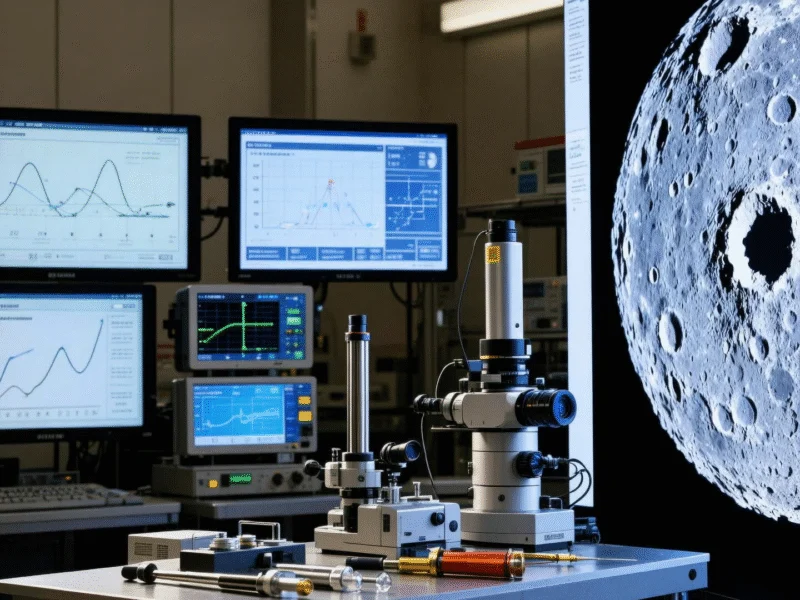Nobel Economics Prize Recognizes Groundbreaking Work on Innovation and Economic Growth
The 2025 Sveriges Riksbank Prize for Economic Sciences has been awarded to three distinguished researchers whose work fundamentally reshapes our understanding of how technological innovation drives economic prosperity. Joel Mokyr of Northwestern University, Philippe Aghion of the Collège de France and London School of Economics, and Peter Howitt of Brown University received the prestigious honor for their complementary research demonstrating the critical relationship between scientific advancement, market competition, and sustainable growth. This recognition comes at a pivotal moment when global economic policies are increasingly focused on technological transformation and its implications for future development.
“I can’t find the words to express what I feel,” said Aghion upon receiving the news, noting that he plans to use the prize money to support research at his laboratory at the Collège de France. The award underscores the growing importance of innovation economics in addressing contemporary challenges, from technological disruption to environmental sustainability.
Complementary Approaches to Understanding Growth
The Nobel committee’s decision to honor both a economic historian and economic theorists reflects the multidimensional nature of innovation-driven growth. Joel Mokyr received one-half of the prize for his historical analysis of what he terms “useful knowledge”—innovations grounded in scientific understanding rather than mere trial and error. His work demonstrates why the Industrial Revolution marked a turning point in economic history, as improvements in technologies like steam engines became systematic rather than accidental.
Aghion and Howitt share the other half of the prize for their groundbreaking 1992 model of “creative destruction,” which explains how market competition drives innovation through the replacement of older products and companies by newer, more efficient ones. Their work has profoundly influenced how policymakers and financial institutions approach technological transformation in modern economies.
The Mechanism of Creative Destruction
The concept of creative destruction lies at the heart of Aghion and Howitt’s contribution to economic theory. Their model shows how companies investing in research and development (R&D) introduce new products that displace established ones, creating a continuous cycle of innovation and replacement. This process, while essential for growth, creates economic turbulence as businesses fail and jobs are lost.
According to University of Chicago economist Ufuk Akcigit, “Unless we replace inefficient firms from the economy, we cannot make space for newcomers with new ideas and better technologies.” This insight highlights the delicate balance between supporting innovation and managing its disruptive consequences.
The researchers also identified a crucial paradox: while new entrepreneurs have strong incentives to develop radical technologies, established companies often reduce R&D investment as their market share grows. This finding has significant implications for how businesses adapt to changing technological landscapes and maintain competitive advantage.
Policy Implications and Societal Challenges
The laureates’ work provides compelling evidence for government support of R&D, particularly for innovations that offer substantial rather than incremental improvements. Their models suggest that market forces alone may not generate optimal levels of innovation investment, creating a rationale for public subsidies and strategic policy interventions.
Diane Coyle of the University of Cambridge notes that the timing of this award is particularly significant given current threats to scientific funding worldwide. “It’s a very timely message when we’re seeing the United States undermining so much of its science base,” she observed. Aghion echoed these concerns, expressing worry about protectionist trends and emphasizing that “openness is a driver of growth.”
Addressing Contemporary Economic Dilemmas
The research honored by this Nobel prize directly informs current debates about technological unemployment, environmental sustainability, and inequality. Mokyr’s historical work shows that while mechanization displaces some jobs, it typically creates new ones—a relevant insight as artificial intelligence transforms labor markets.
Meanwhile, Aghion has turned his attention to one of the most pressing questions in modern economics: “How can we redirect growth towards green?” His work, along with Mokyr’s, suggests that well-crafted policies can harness innovation to address environmental challenges without sacrificing economic progress. As businesses navigate these complex transitions, understanding technological evolution and security considerations becomes increasingly crucial for sustainable development.
Broader Recognition and Impact
Economists and policymakers worldwide have welcomed the Nobel committee’s choice. Richard Jones of the University of Manchester noted, “It’s important that economists understand the conditions that lead to technological progress,” while Coyle observed that the winners “have long been on people’s list of potential candidates.”
The award highlights the essential role of interdisciplinary approaches in economics, bridging historical analysis, theoretical modeling, and contemporary policy challenges. As the world grapples with how to sustain growth while addressing climate change and technological disruption, the insights of these three economists provide valuable guidance for creating more innovative, equitable, and sustainable economies.



